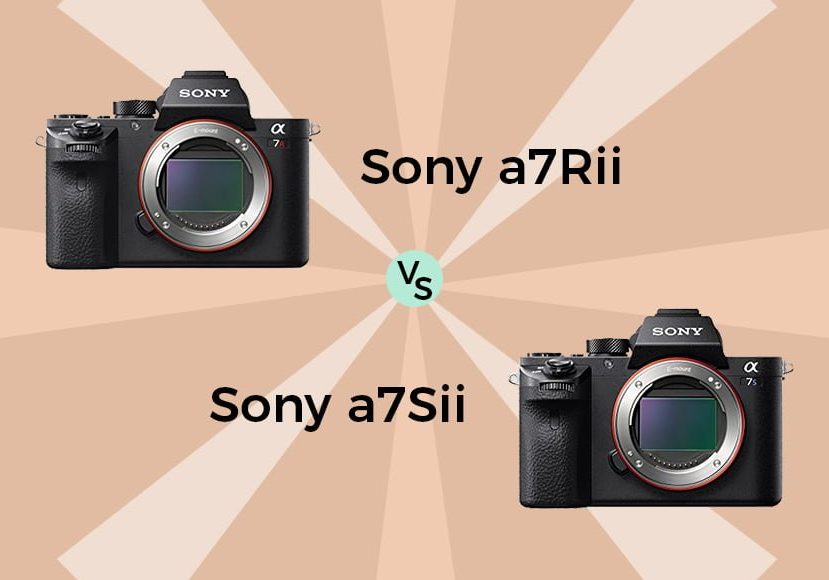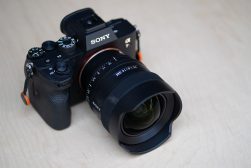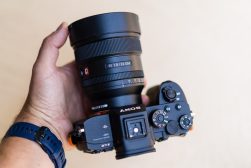
Differences between Sony a7r ii vs a7s ii
When it comes to the Sony a7s II vs Sony a7r II, which is the better camera? Check out this comprehensive guide to find out which one to choose!
This Sony a7S II vs a7R II guide is exactly what you need if you’re struggling to decide between these two cameras.
The Sony a7S II and the Sony a7R II are both powerful mirrorless cameras and share a surprising number of features – despite catering to markedly different sections of the market.

Durable build, stellar image quality and lower price make the a7Rii our #1 choce.
The a7S II is Sony’s preeminent video/stills hybrid, offering excellent capabilities for the serious video shooter while still meeting the needs of many still photographers.
It offers an unusually low megapixel count but makes up for this both in terms of video quality and low-light performance.
Whereas the a7R II is the more photo-focused camera, packing a huge megapixel count and a decent autofocus system.
That said, hybrid shooters will find plenty to love in the a7R II, given its high-quality Super35 video recording, S-Log option, and more.
So, if you’re looking to decide between these two powerful Sony cameras, read on.
(You may also be interested in our guide to the Sony a7 II vs Sony a7R II.)
Sony a7S II vs a7R II | Key Differences
1. Size & Weight
The Sony a7SII and the a7R II debuted within months of one another – as part of the same Sony mirrorless iteration.
So, you shouldn’t be surprised to learn that the cameras’ bodies are basically identical in every way, from their weights to their dimensions to their button placement.
The a7R II comes in at 625g; the a7S II weighs 627g.
And check out their dimensions: 127 x 96 x 60mm on the a7R II, versus 127 x 96 x 60mm on the a7S II. In other words, the external design is exactly the same.
This puts both cameras squarely into the “compact full-frame” category. Both offer relatively low weights (a significant step up from heavier full-frame DSLRs) and decently compact bodies for a professional interchangeable lens camera.
While I wouldn’t describe these two bodies as “travel-ready,” their compact size will be a big help for anyone who travels frequently, be it by plane, car, or foot (e.g., hiking in the wilderness).
2. Rear LCD & EVF
You’re not going to find much difference in terms of the rear LCDs and electronic viewfinders:
You have a 1230K dot LCD on both the a7R II and the a7S II, for a fairly clear Live View shooting experience. Both are three inches – which isn’t huge but is fairly standard for Sony mirrorless bodies.
Unfortunately, while both cameras offer tilting LCDs, neither packs a touchscreen. And neither screen is fully articulating, either, which means that videographers won’t have complete flexibility when shooting from unusual angles.
As for the electronic viewfinders:
Both are 2.36M dots in resolution. Both look quite nice, even if they’re not on the same level as Sony’s more recent a7R models, and should give you plenty of resolution to work with when shooting.
If you’re coming over to mirrorless from DSLRs, then either EVF is probably going to satisfy you, though you will notice a drop in resolution compared to your DSLR’s optical viewfinder.
3. Build & Handling
If you’re looking for a relatively solid body for outdoor shooting, then either of these cameras is going to perform well – even if neither option could be described as ultra-rugged.
Both the a7R II and the a7S II offer solid, magnesium alloy construction, as well as weather resistance.
They’re not on the same level as some of the professional sports bodies on the market, but outdoor event photographers, landscape photographers, and street photographers should be pretty satisfied with their robustness.
Note that the a7R II does offer a more durable shutter than the a7S II. Sony marks the a7R II at 500,000 actuations, compared to 200,000 on the a7S II.
In other words, you can expect the a7R II to last substantially longer. But there is the question of whether this matters; all but the most prolific shooters will upgrade their cameras long before the 200,000 mark.
Plus, both cameras offer silent shooting – which uses an electronic shutter and doesn’t contribute to the actuation count.
In terms of handling, the identical designs on these two bodies ensure equally good ergonomics. While the lack of a touchscreen and a fully articulating rear LCD is frustrating, both are solid-feeling cameras with decent front grips.
Both cameras also pack in-body image stabilization, which makes for a better shooting experience all around – be it for stills or video. This is especially key if you’re a frequent low-light shooter, or if you handhold your videos.
Unfortunately, neither body offers anything more than the standard SD, UHS-I card slot. For some photographers – those that require redundancy in their work – this is going to be a dealbreaker.
(And if you’re one of those photographers, I’d recommend checking out the a7R III or the a7 III, which are both going to offer dual card slots in the same-ish price range.)
4. Autofocus
Neither the a7R II nor the a7S II is designed to be an action-centric camera, and both are somewhat lacking when it comes to autofocus.
The a7S II offers 169 AF points, but they’re all contrast-detect, and the results are very mediocre. You can expect fast focusing when the light is strong and subject contrast is high, but you’re not going to get much focusing prowess in low light.
In terms of tracking:
The a7S II does a decent job in good light but is going to disappoint when the lighting is iffy (which is frustrating, given that the a7S II’s low-light image quality is really quite excellent.)
As for the a7R II’s autofocus:
It’s not great, but it’s not bad. It’s better than the a7S II and is going to be the superior option for sports, wildlife, and other action scenarios.

Sony a7R II | © Benny Jackson
Focusing is speedy in good light and is surprisingly quick when tracking – and even when tracking in low-light – thanks to an expansive 299 phase-detect point and 25 contrast-detect point system.
Is the a7R II good for sports shooting?
Not really. It can handle the occasional action situation (if you’re in a pinch), but I definitely wouldn’t recommend it to a frequent action photographer – though its performance is all-around better than the a7S II.
And if you’re a video shooter, you’re probably going to want to stick to manual focusing in most situations.
5. Drive
As indicated in the previous section:
The a7R II and the a7S II are not action cameras.
Which is why both bodies peak at just five frames per second.
This isn’t terrible, but it’s certainly not enough for serious action situations.
And note that the a7S II’s already-slow continuous shooting speed comes with a caveat:
Its 5 fps is with the autofocus locked. If you want continuous AF while shooting, you’ll only get up to 2.5 fps, which is really quite slow – especially in today’s age of blazing-fast mirrorless cameras.
The one advantage the a7S II has over the a7R II is in terms of its buffer, which allows for 28 RAW photos (or 63 JPEGs), compared to 23 RAW photos (or 23 JPEGs) on the a7R II.
But this isn’t going to make a huge difference, and considering the ponderous continuous shooting speed of the a7S II, the a7R II is still going to be the better bet for action situations. In this round of the a7sii vs a7rii round, one takes the cake.
6. Image Quality
Both the a7R II and the a7S II are known for their full-frame image quality – just in different ways.
The a7R II features an impressive 42 MP of resolution, which caters to landscape photographers, commercial photographers, and any other shooters who require as much detail as possible in their photos.
The a7S II, on the other hand, offers just 12 MP of resolution. This isn’t going to be enough resolution for most photographers, especially if they plan on producing large prints.
But such a low megapixel count comes with an advantage:
It allows for excellent high ISO performance. (See also: differences between Sony a7R II vs a7R III.)
High ISO capabilities are one area where the a7S II dominates. It offers a native ISO range of 100-102,400, with noise only starting to become noticeable around ISO 6400 (and images staying useable to around ISO 25,600).
Now, the a7R II, despite its huge megapixel count, is no high-ISO slouch. To my eye, noise isn’t really noticeable until around ISO 1600 or so, with images useable up through ISO 6400, depending on your intentions for the photos.
But if you’re looking for a dedicated low-light camera, the a7S II is the way to go.
I’ll also note that the Sony a7R II features slightly improved dynamic range over the a7S II (13.9 stops versus 13.3 stops). And for photographers who frequently shoot in high-contrast situations, even this small difference may be worth considering.
7. Video
The Sony a7S II is often thought of as a video-centric mirrorless camera, thanks to features such as:
- Internal 4K/30p recording using the full width of the sensor
- 1080p recording at 120 fps (with a 2.2x crop)
- S-log2 and S-log3, for increased dynamic range
- A mic jack
- A headphone jack
You also get in-body image stabilization for smoother footage.
But while the a7S II is a strong video performer, the a7R II is quite impressive in its own right, offering 4K/30p recording – though with pixel binning.
If you want to avoid any loss of quality, you can shoot in Super35 mode, which takes a 1.5x crop but produces excellent footage.
You also get S-Log2, a mic jack, a headphone jack, and IBIS, for all-around impressive video performance.
Here’s the bottom line:
The a7S II does offer some video benefits over the a7R II (e.g., uncropped 4K) – and for the serious video shooters, this is going to be worth it.
But the a7R II packs quite a lot for the hybrid shooter and is going to be a good choice for anyone who shoots video on occasion. In this part of the a7RII vs a7SII battle, there is one clear winner.
8. Price
These days, you can grab the Sony a7R II for around $1400 USD.
The a7S II, on the other hand, is about $1000 USD more, at $2400 USD.
If you’re a stills shooter interested in a high-resolution camera, the a7R II is clearly the way to go, even if you occasionally shoot video on the side.
If you’re a serious video shooter, then the a7S II is probably going to be the better bet, though you’ll want to consider whether the extra $1000 USD is worth it.
Make sense?
Sony a7S II vs Sony a7R II | Final Words
The Sony a7S II and the Sony a7R II are both older cameras.
And in this case, it means that you can get some powerful features – at an amazing price point.
The a7S II is a great option for video-centric shooters, allowing you to capture high-quality footage, even in low light.
Autofocus performance isn’t great, but it isn’t terrible, and you’ll like the smaller form-factor compared to DSLR competitors.
Then there’s the a7R II.
What it lacks in video capabilities it makes up for in image quality, packing a 42 MP sensor, impressive dynamic range, and pretty good low-light performance, all for under US$1,500 (check latest price here).
So which should you buy?
If you’re in the market for video (with still shooting as a secondary goal), grab the a7S II.
Otherwise, stick with the a7R II, which is a good option for a great price.

Durable build, stellar image quality and lower price make the a7Rii our #1 choce.













